Hiring the right designer is like solving a design problem, gather the right insights, act decisively, and aim for the unexpected quality that elevates the whole system.
Great design requires tension, but hiring often prioritises fit, hiring for comfort. Instead, I try to prioritise “future alignment” — asking how this candidate will expand our culture and challenge our thinking.
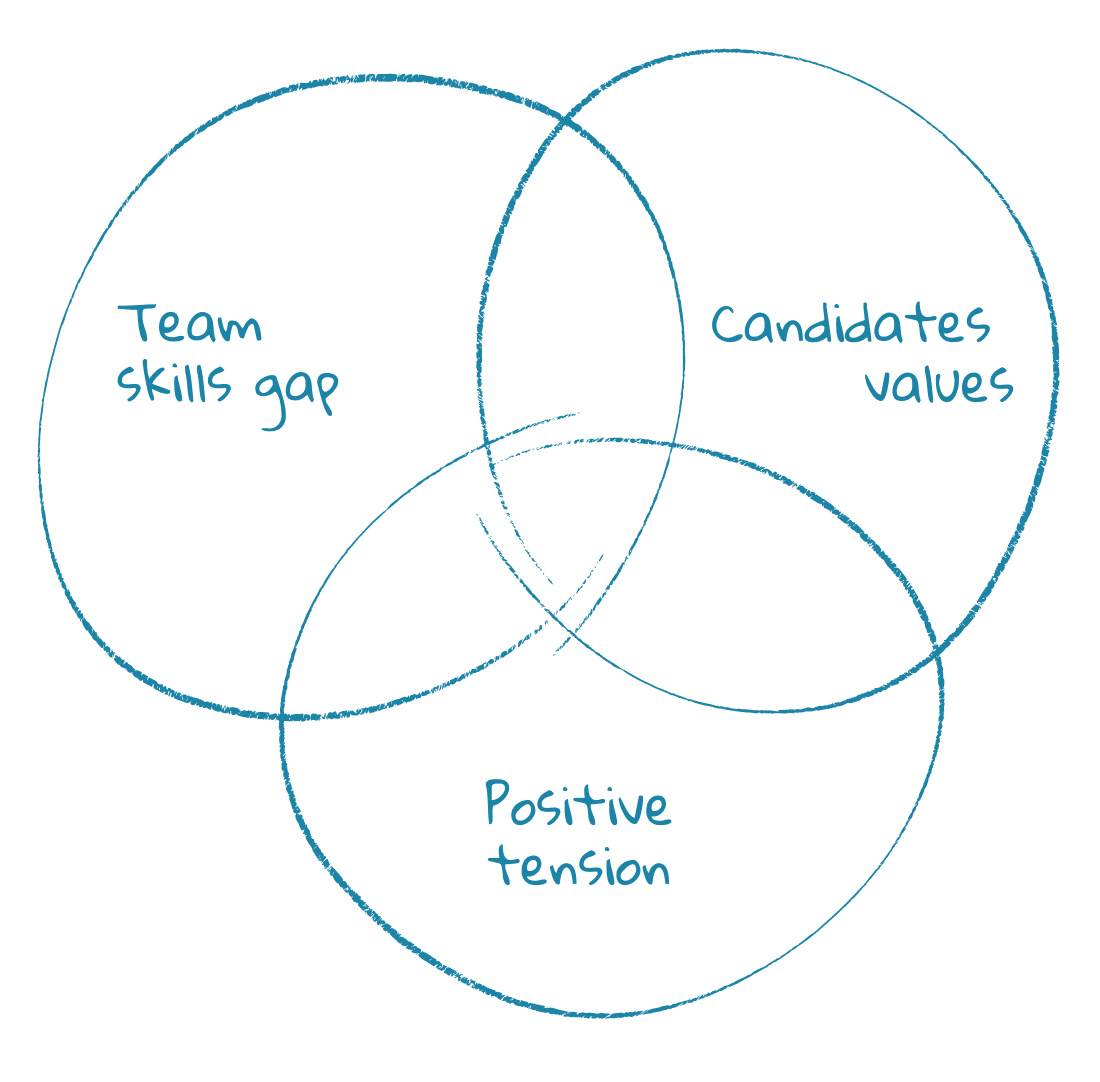
This guide aims to balance conversation with targeted exercises to uncover relevant insights about candidates’ skills, mindsets, and potential for positive impact. To find people who can see the whole picture, not just their piece of it.
What is it?
- Two assessment frameworks
- A process breakdown
- And a bonus
Goals of this approach
- Ensure consistent evaluation
- Reduce bias through structured, repeatable methods
- Encourage storytelling to reveal deeper insights
- Focus on finding future alignment, not just right for right now
The assessment frameworks
These tools support information gathering and facilitate group discussions and upward presentations for hire approval.
Design skills build assessment
This is about what they do — their technical and strategic design capabilities, identifying their strengths and level within specific areas of design. Initially developed for career progression check-ins, this tool breaks down design capabilities to help:
- Identify individual and team strengths
- Highlight gaps and focus areas
- Building balanced teams
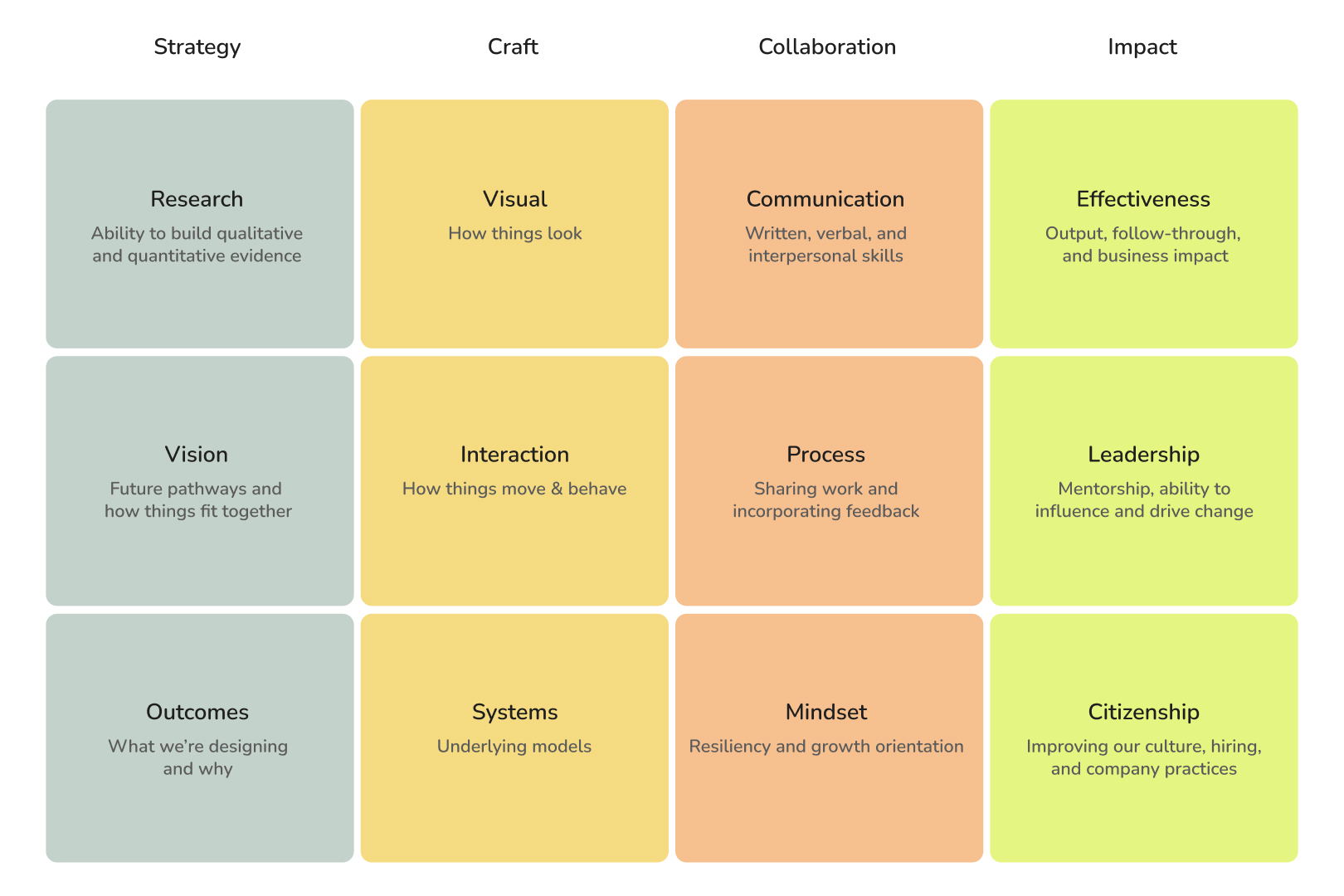
Here’s how we evaluate each
Level 1 - Foundational
- Basic knowledge requires oversight
- Focused on developing craft skills
Level 2 - Independent
- Owns tasks with minimal oversight
- Actively improving collaboration and communication
Level 3 - Leader
- Guides teams and shapes outcomes
- Influences outcomes beyond their team
Level 4 - Influential
- Creates original solutions, sets industry standards
- Supports others’ growth and influences organisational outcomes
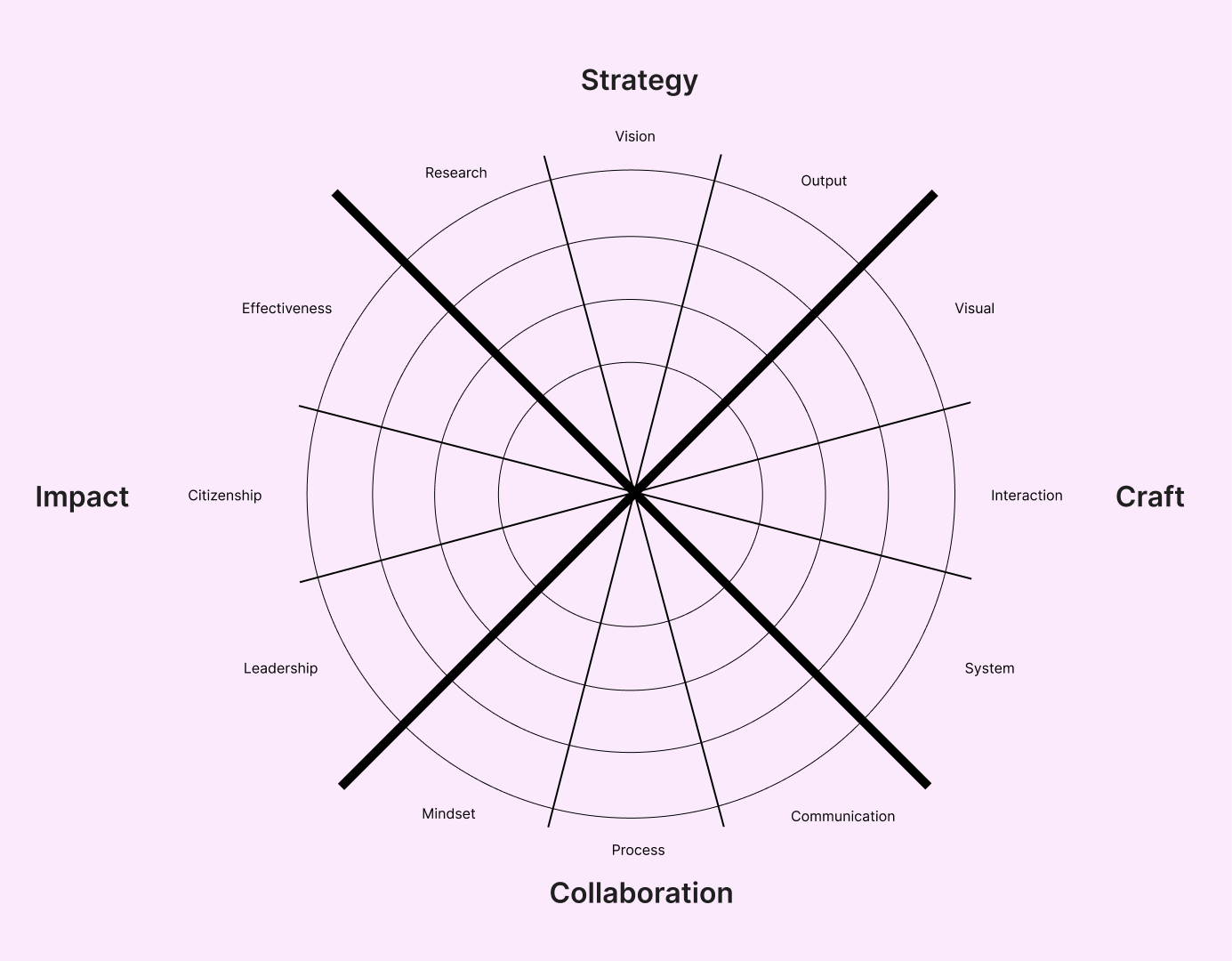
Plotting team archetypes
<div class="swiper-wrapper">
<div class="swiper-slide">
<img src="assets/post-assets/interview-guide-s06.jpg" alt="" loading="lazy" />
<div class="swiper-lazy-preloader swiper-lazy-preloader-black"></div>
</div>
<div class="swiper-slide">
<img src="assets/post-assets/interview-guide-s07.jpg" alt="" loading="lazy" />
<div class="swiper-lazy-preloader swiper-lazy-preloader-black"></div>
</div>
</div>
<div class="swiper-scrollbar"></div>
<div class="swiper-button-next"></div>
<div class="swiper-button-prev"></div>
Team build assessment
This captures who they are — the interpersonal and reflective elements that aren’t easily quantified in the skills matrix. Dimensions like Portfolio quality and Cultural fit focus on how candidates present their work, think creatively and interact with others. These additions serve to capture interview assessment notes in a structured consistent way and help identify that intangible quality that will boost the team.
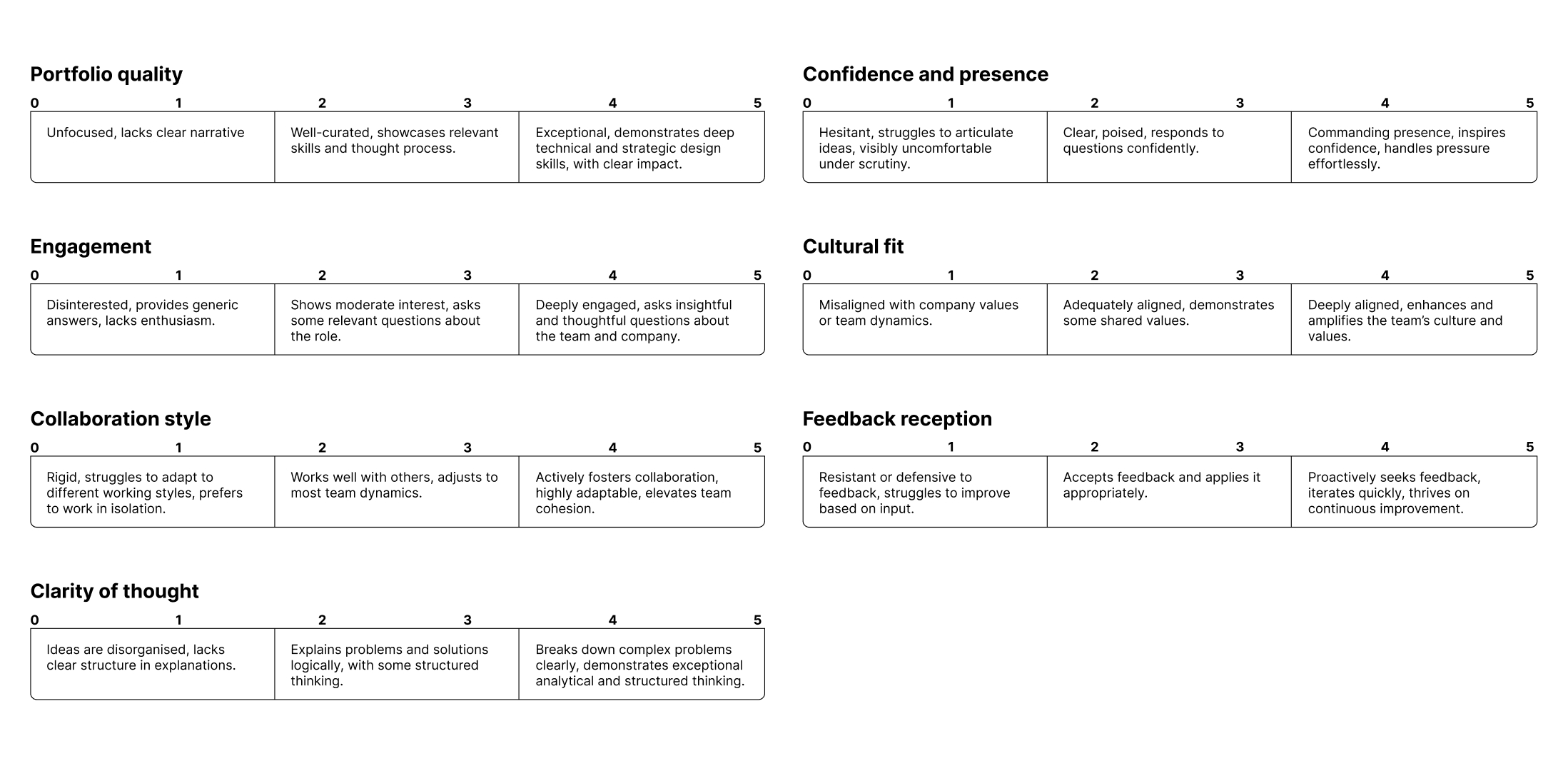
Portfolio quality
Assesses their ability to showcase skills and impact.
Why it matters
A strong portfolio demonstrates technical competence and design thinking.
Confidence and presence
Evaluate their ability to present work and communicate.
Why it matters
Confidence influences collaboration and advocacy for design.
Clarity of thought
Gauges their ability to explain complex problems and approaches
Why it matters
Structured thinking is crucial for solving design problems.
Engagement
Measures enthusiasm for the role and company.
Why it matters
Engagement often signals a strong cultural fit and commitment.
Cultural fit
Evaluates alignment with team values and culture.
Why it matters
Ensures smoother integration and long-term success.
Collaboration style
Assesses adaptability to diverse working styles.
Why it matters
Harmonious collaboration strengthens team dynamics.
Feedback reception
Evaluate openness to constructive criticism.
Why it matters
Designers who iterate based on feedback grow faster and deliver better results.
How To
Pre-work: Establish your criteria
Like any research - knowing what you are looking for instead of relying on the process to bring you the answer is crucial. Use the design skills framework to identify the future fit target needed, ensuring a balanced team. This clarity helps focus on areas that matter during interviews.
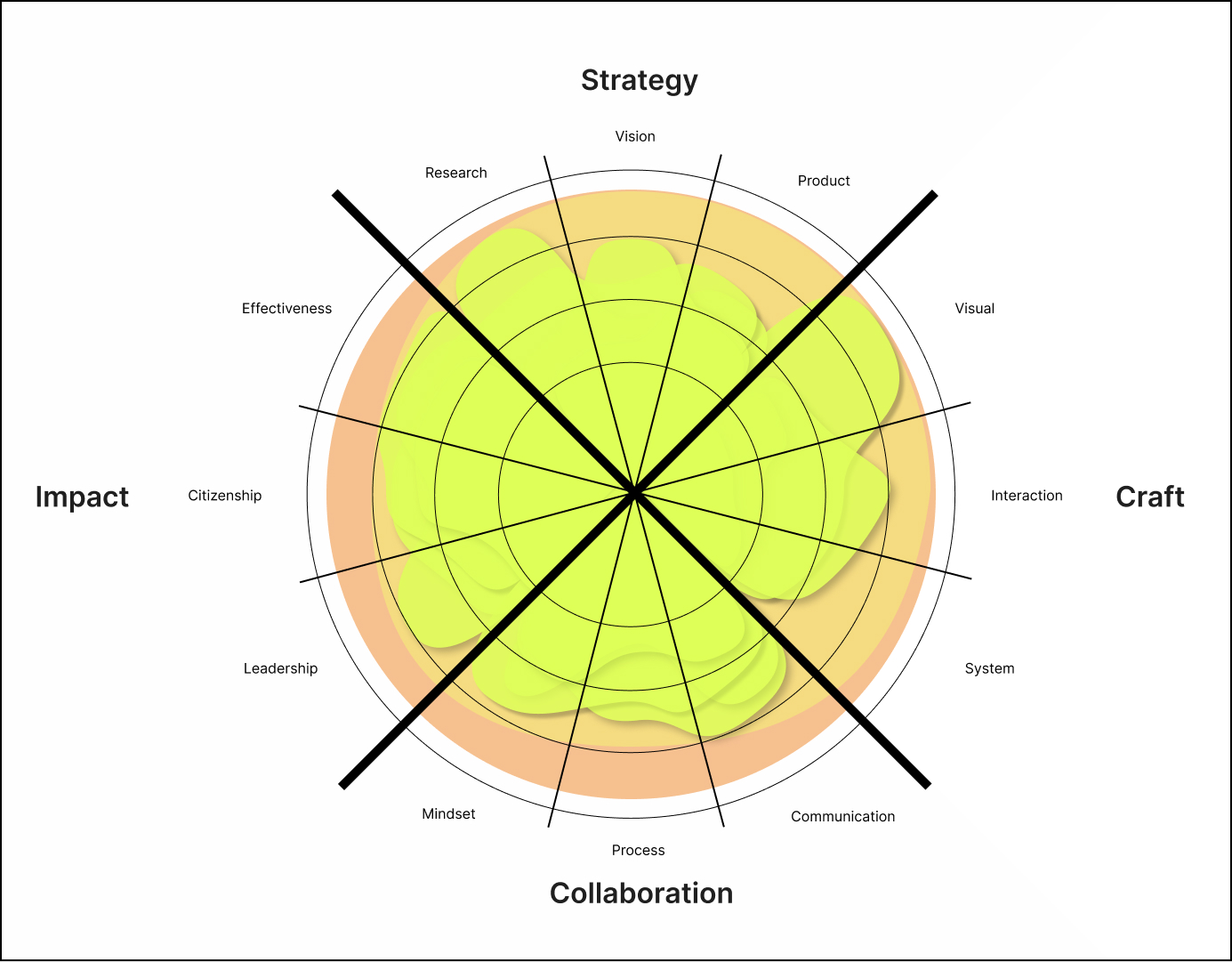
Round 1: First impressions
Assess what your team’s cultural and skill levels potentially gain, while learning about the candidate’s background and motivations.
Keep it casual but aim at finding a mutually beneficial arrangement. The intention is to ask simple open-ended questions that let them tell their story.
Sample question guide
The questions in order generally guide a good conversational flow, but the intention is not to provide a linear guide to be used verbatim. But more the starting points into deeper conversation.
What is your origin story—what first pulled you into design?
This question sets the tone for a reflective conversation and uncovers what drives them.
Probes
Was it a specific moment, person, or project?
What non-design experiences have shaped your approach?
What keeps you interested, especially when projects become challenging or repetitive?
Helps determine their ability to sustain enthusiasm and deliver long-term value.
Probes
Have there been any moments where your understanding of design deepened significantly or changed?
Can you share an example of how you stayed inspired during a particularly challenging project?
What recent trends or technologies excite you the most?
What’s one aspect of design that continues to surprise you?
Design has a wide spectrum of roles and responsibilities; where do you feel you add the most value? Conversely, where do you feel you could use more support or growth?
Helps match their expertise to your team’s specific needs.
Probes
What part of the design process do you excel at and why?
Are there specific roles or responsibilities you’re eager to take on?
How do you see your role evolving in the next few years?
What do you value most in the teams and projects you’ve worked with?
Ensures alignment with your team’s culture and project management approach.
Probes
Can you describe a team dynamic that really worked for you? Why?
Describe a time when a team dynamic didn’t work for you.
What did you learn from that experience, and how did it shape the way you approach collaboration now?
How do you approach conflict or differing opinions within a team?
What tools do you work with?
Ensures compatibility with your team’s preferred processes.
Probes
Which tools do you find indispensable in your design process?
How do you decide when to switch or adopt a new tool?
Can you share a time when switching tools improved your process?
How do you approach prototyping?
What outcomes in your work are you most proud of?
Helps assess their ability to deliver tangible results that align with broader organisational objectives.
Probes
What’s a project where your design led to measurable user or business improvements?
What did you learn from that success, and how do you apply it today?
Have you ever been surprised by the outcome of a project? How did it shape your perspective?
What’s the most controversial design decision you’ve made, and how did you defend it?
Demonstrates their problem-solving skills and collaborative mindset.
Probes. Describe a situation where your design choices faced strong opposition. How did you handle the conversation?
Were there any compromises you had to make? How did you handle that?
How do you prepare for situations where your design decisions might be challenged?
How do you start new initiatives or projects?
Ensures their approach aligns with your team’s methodology.
Probes
What’s the first thing you do when handed a new project with little initial direction?
How do you prioritise research, exploration, and execution in the early stages?
Do you use any frameworks or processes to guide your work?
What areas are you keen to get into but have not had the chance yet?
Helps you identify areas where you can support their career development.
Probes
Are there emerging technologies or platforms you’re excited about?
How do you plan to explore emerging areas of design, such as AI or sustainability?
Have you pursued any personal projects to explore these areas?
What’s a design trend you disagree with, and why?
Aside from design, what are you interested in?
Encourages a holistic view of the candidate, showcasing their multidimensionality.
Probes
Do you have any hobbies or side projects that influence your design work?
Can you share an example of how an outside interest has shaped a recent project?
Are there disciplines or industries you draw inspiration from that might surprise people?
Round 2: Skills deep dive
This round is about how candidates think, collaborate, and apply their design expertise in real-world contexts. Evaluate problem-solving abilities, critique skills, and understanding of design processes.
At this stage, I bring a few team members. This has the dual purpose of introducing the candidate to potential new colleagues and for me to see how they work with the team in group settings. It’s not at all a normal working session, but as much as possible I try to treat it like one.
Case study walkthrough
Evaluate how candidates frame their work, articulate their role, and connect their contributions to tangible outcomes.
Project overview
Start by asking
- “Why did you choose this project?”
- “What problem were you solving, and why was it important?”
This sets the stage for understanding their motivation and the project’s scope.
Step-by-step walkthrough
Guide them through the key phases
- Problem definition
“How did you frame the problem, and what insights drove your approach?” - Research & discovery
“What methods did you use, and how did your findings shape the direction?” - Concept development “How did you decide on the final design direction? Were there trade-offs?”
- Collaboration
“Who else contributed, and how did you ensure alignment across teams?” - Final outcome & results “What was the impact of your solution, and how did you measure success?”
Post-mortem reflection
- “What would you do differently if you had to revisit this project?”
- “How has this project influenced your approach to design since?”
What to look for
- Storytelling skills
Can they narrate the journey from problem to solution? - Impact focus
Do they connect their work to meaningful outcomes (user or business)? - Strategic thinking
How well do they balance user needs, technical constraints, and business goals? - Self-awareness
Do they reflect honestly on challenges and areas for improvement?
Collaborative Problem-Solving Exercise
Assess how candidates approach complex, ambiguous problems in a collaborative environment. The focus is on process and decision-making, not a perfect solution.
Present the problem
Frame an open-ended design challenge. Keep it simple but layered enough to encourage probing questions.
For example
“A city transit authority wants to increase ridership among young professionals. They’ve asked for innovative ideas to improve the commuter experience. How would you approach this?”
Set expectations
Make it clear this isn’t about delivering a polished solution. Instead, you’re evaluating how they:
- Define the problem
- Identify what’s critical to explore further
- Communicate their thought process
Process
Do this as a team using note and present format intervals
- Define the problem
How do they interpret the challenge and clarify ambiguities? - Ask the right questions
What additional information or user insights would they prioritise gathering? - Explore solutions
Encourage them to sketch or outline high-level ideas - Collaborative discussion
Simulate a quick brainstorm by asking, “If you had to sell this concept to a stakeholder, how would you frame its value?” - Follow-up questions
- “How did you decide where to start?”
- “What assumptions did you make, and how would you test them?”
- “If the project scope suddenly changed, how would you pivot?”
What to look for
- Clarity of thought
Do they identify and prioritise the right areas? - Collaborative mindset
How do they engage and build on ideas? - Adaptability
Can they respond dynamically to new constraints or feedback? - Big-picture thinking
Do they connect the challenge to broader user or business goals?
Assessment
Once the information gathering is complete now for the synthesis.
Score against the design matrix to see how close the candidate lands against the target. Score and note the candidate fit assessment to help articulate thoughts and evaluate. Design add provides the technical baseline, while team add often tips the scales when candidates are evenly matched or might even open up the pathways to hire unconventionally.

This information should help your decision-making process. I’ll often role and scenario-play during this process. Asking what if we hired X, they would bring… and we would be able to…, they will work with well with…, and we can help them develop… etc.
Iteration tip
Every interview is a design iteration. Take notes, refine your questions, and evolve this guide to better fit your team’s changing needs. The best teams are built one insightful interview at a time.
Bonus: A long list of questions
These questions offer additional focus and help uncover deeper insights into candidates’ skills, thinking, and approaches.
General
- How does this role align with your vision for your dream job?
- What’s the core mission of a designer in your view, and how does that change depending on the product or team?
- Where do you believe a designer should take the lead, and where should they step back? Why?
- What’s your greatest strength as it relates to this position? Or, what can you do for us that another designer can’t?
- What part of your current role energises you the most, and why?
- What’s one frustration or limitation in your current role that you’d change to improve your work?
- How do you balance technical skills with design intuition?
- What’s the most technically complex project you’ve tackled, and how did you approach it?
- Describe a product with an exceptional user experience. What specific design decisions made it stand out?
- What’s your go-to source of inspiration, and how does it influence your work?
- Who are your primary users or clients, and how do you approach understanding their needs?
- What’s been your most rewarding client collaboration, and why?
- Who has been your toughest client, and how did you navigate that relationship?
- Describe a challenging conversation with a stakeholder. How did you handle it, and what was the outcome?
Process
- Can you break down your design process step-by-step? What’s one project where this process delivered particularly strong results?
- Share a time when user feedback during research surprised you.
- What post-launch insights forced you to rethink your design choices, and how did you respond?
- How have you navigated your role within mid-sized teams, and what impact did you have?
- What’s your ideal balance between independent work and team collaboration?
- Tell me about your current team’s structure and how you fit into it.
- Walk me through a project where you led a design solution from idea to launch. What were the key milestones?
- How do you ensure design adds value within an agile workflow? Any specific strategies that have worked for you?
- How do you ensure quieter voices on a team are heard during design critiques or brainstorming sessions?
- Can you give an example of missing a deadline and how you handled it?
Growth
- What’s one skill or area you’re actively working to improve, and what steps are you taking?
- Do you see your long-term path in management or as an individual contributor?
Management
- What’s the core responsibility of a design manager, and how do you measure their success?
- What specific challenges or opportunities come with managing designers versus other roles?
- What’s been your toughest management challenge, and how did you overcome it?
- Can you provide examples of advocating for design within your organisation?
- What signs indicate a designer is plateauing, and how do you help them regain momentum?
- What qualities do you prioritise when hiring a designer?
- If you’ve ever had to let a designer go, what were the circumstances, and what lessons did you take away?
- What’s the biggest mistake you’ve made as a manager, and what did it teach you?